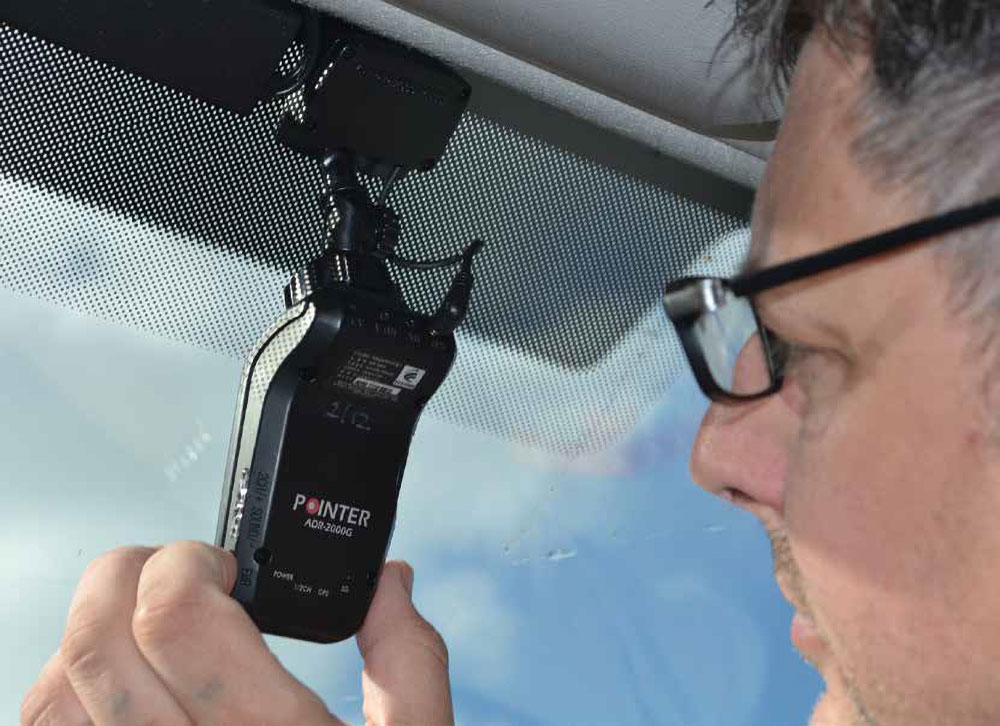
Human witnesses are not usually very reliable in these cases. People are often so shocked by what they have seen that they can’t comprehend it
External and internal cab cameras can be a real aid to road safety and driver training, but what are the potential pitfalls?
There can be little doubt that installing cab cameras is a sound investment for many fleet operators. The knowledge that their driving is being recorded generally has a positive impact upon driver behaviour – and in the event of a collision, the camera should provide at least some indisputable evidence as to what happened in the moments before the impact.
This evidence can often prove vital in mounting an effective defence for the driver. One well-known transport lawyer we spoke to said that the rise of the cab camera has enabled him to get charges dropped against drivers who have allegedly collided with cyclists, with comparative ease.
“Human witnesses are not usually very reliable in these cases,” he said. “People are often so shocked by what they have seen that they can’t comprehend it. In most of the cases that I have been involved in where it has been available, review of recorded footage has been sufficient to clear the driver of blame.”
Cab cameras also provide a defence against ‘crash for cash’ merchants, who often target commercial vehicles as the operator is usually easily identifiable and well insured.
The key feature of all dash cameras worthy of the name is their ability to record continuously, with the newest images overwriting the oldest in a loop.
The simplest dash cameras record information on to an SD card and the footage can be easily reviewed when the card is retrieved.
Easy to tamper with
This is cheap and convenient, but it would be easy for a driver who realises that the evidence on the card could condemn him to tamper with the card.
Also, SD cards are not 100% reliable when being constantly overwritten. They will need to be regularly checked to ensure that they do not require reformatting or replacement.
There’s also the question as to whether the evidence produced by the camera would be of sufficient quality and credibility to stand scrutiny in court. Without verifiable accurate time, date and location data, proof that the images have not been subsequently manipulated and sufficient quality to discern what has been going on, the evidence gathered may be of little use.
It’s a bit of a truism that you get what you pay for and the better the quality of the camera, the better quality the saved footage will have.
Try prevention first
It’s also a truism that prevention is better than cure. Fleet managers will normally be informed about accidents one way or another, but even the vehicle’s driver may be blissfully unaware of near misses.
More likely still is that they avoid the incident by making violent steering or braking inputs, then manage subsequently to satisfy themselves that it was all the other person’s fault and it was only their superb reactions that averted an accident and they have nothing to learn from the incident.
Other than the very simplest models, most dashcams should incorporate a location, time and distance stamp, but more sophisticated ones can do far more than this, with some being, in effect, telematics systems offering the fleet manager a real-time window into the driver’s world.
Ideally, these cameras should offer a built-in nonvolatile memory and incorporate accelerometers which immediately ‘save’ recordings when the vehicle is being manoeuvred violently to the service provider’s own server.
The service provider should then alert the operator and allow secure viewing of the footage generated to aid a debrief of the driver.
Most drivers are generally accepting of forward-facing cameras, and blind-spot cameras can be set to simultaneously show the driver what is going on around his vehicle and make a recording of it.
More controversial are the driver-facing cameras offered by some system providers.
Front and back
Last year, cameras recording simultaneous in-cab and forward-facing footage were instrumental in convicting truck driver Tomasz Kroker of causing four deaths on the A34.
He was recorded playing with his mobile phone seconds before he hit a line of slower-moving vehicles.
While cab cameras form a powerful deterrent against reckless behaviour and can also alert employers to problems which their drivers may not be aware of, such as sleep apnoea, their introduction is likely to raise all sorts of legitimate questions, including whether the system can be used to spy on drivers while they are taking a break or rest in the cab.
Independent advice
It is vital that operators seek independent legal advice before attempting to install these devices.
For instance, the Information Commissioner’s Office (ICO) makes it plain that these devices are likely to be covered by the Data Protection Act 1998, which states that all information (including video and audio recordings) must be used fairly and lawfully, collected only the information needed for a specific purpose(s), only held for as long as is necessary and kept secure.
The subject of the information must be able to see it on request.
The ICO cautions that signs must make it plain that CCTV is in operation and these systems should only be used in areas where people can normally expect privacy in exceptional circumstances and to deal with specific areas of serious concern.
CCTV should not be used to record conversations between people, except under some specific exemptions (for instance, when a panic button is activated).
This advice would appear to preclude the use of these devices in truck cabs (especially sleeper cabs), unless the driver can deactivate them when off-duty.
The employer must undertake the following steps:
- Make sure someone in the organisation has responsibility for the CCTV images, deciding what is recorded, how images should be used and who they should be disclosed to.
- Register with the Information Commissioner’s Office.
- Have clear procedures on how to use the system and when to disclose information.
- Make regular checks to ensure the procedures are followed.
Breaching the DPA is a criminal matter and the penalties imposed can be severe.




